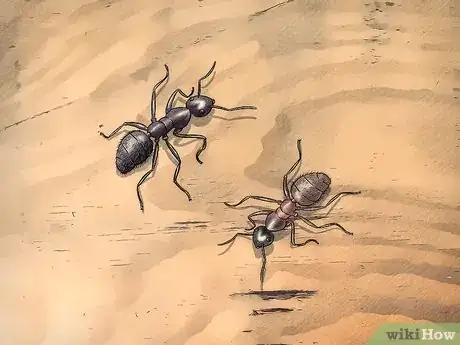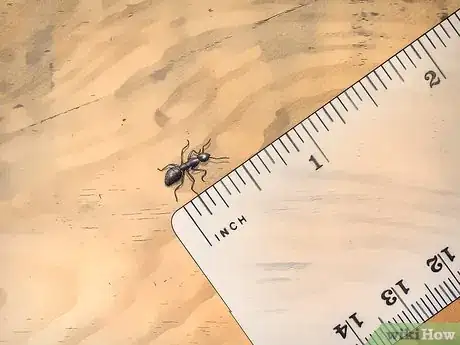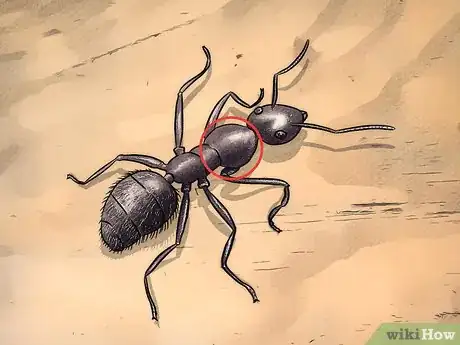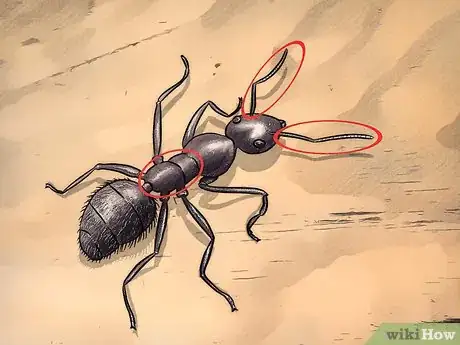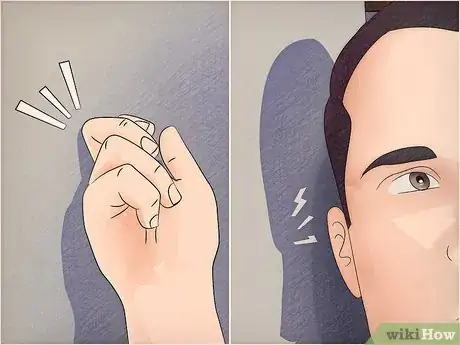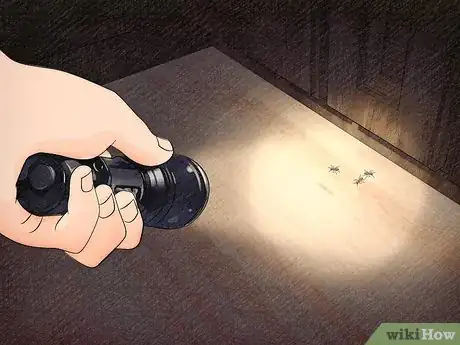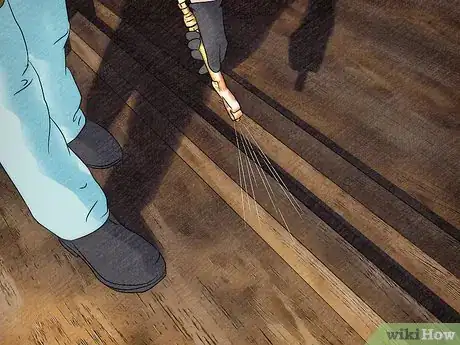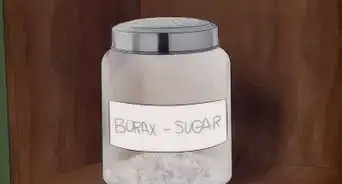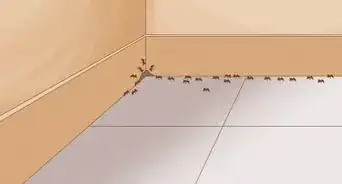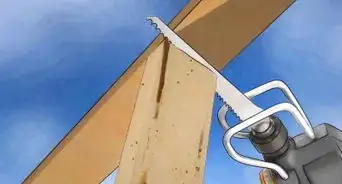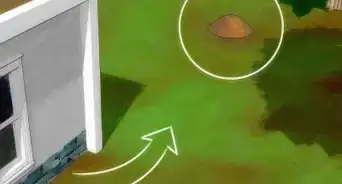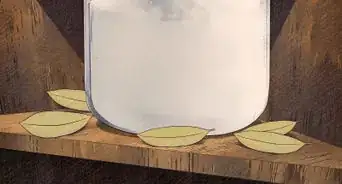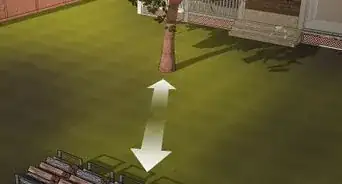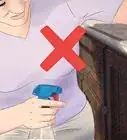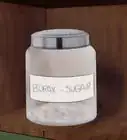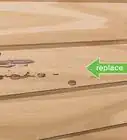This article was co-authored by Scott McCombe. Scott McCombe is the CEO of Summit Environmental Solutions (SES), a family-owned local pest solutions, animal control, and home insulation company based in Northern Virginia. Founded in 1991, SES has an A+ rating with the Better Business Bureau and has been awarded “Top Rated Professional,” and “Elite Service Award" by HomeAdvisor.
wikiHow marks an article as reader-approved once it receives enough positive feedback. This article received 16 testimonials and 90% of readers who voted found it helpful, earning it our reader-approved status.
This article has been viewed 527,941 times.
Carpenter ants play key ecosystem roles, particularly by aiding in the decomposition of decaying trees. They also can infiltrate homes and other buildings, nesting in moist, rotting wood and causing significant structural damage. Being able to properly identify and distinguish carpenter ants from other species is an important factor in determining whether you have an infestation. You can look at physical characteristics, as well as signs of an infestation.
Steps
Noting Physical Characteristics
-
1
-
2Note size. As you observe ants, try estimate their size. Carpenter ants are not very big. Normally, you will see worker ants around your home. They are generally 3/8 to 1/2 an inch.[3] [4]
- However, in some areas carpenter ants tend to be smaller. In Minnesota, for example, some carpenter ants are only 3/16 of an inch. When noting size, look to other characteristic as well.
EXPERT TIPScott McCombe is the CEO of Summit Environmental Solutions (SES), a family-owned local pest solutions, animal control, and home insulation company based in Northern Virginia. Founded in 1991, SES has an A+ rating with the Better Business Bureau and has been awarded “Top Rated Professional,” and “Elite Service Award" by HomeAdvisor.Pest Control Specialist
 Scott McCombe
Scott McCombe
Pest Control SpecialistOur Expert Agrees: Carpenter ants are black ants with large heads and mandibles. They have two types of workers: the larger soldiers are about 1/2" long, and they will travel up to 100 yards from the colony. The smaller workers are 1/4" long. They stay much closer to the main nest, and they aren't particularly distinctive from other house ants.
Advertisement -
3Watch for a round thorax. The thorax refers to the segment of an ant just below its head. Carpenter ants have a rounded thorax. The upper surface should be evenly rounded throughout.[5]
-
4Look at the antenna and waist. The midsection of a carpenter ant should be pinched and slim in appearance. Their antennae will be bent slightly.[6]
- Noting the antennae and waist helps distinguish carpenter ants from termites. Termites have straight antenna and a broad waist.
- Compared to some other ants, carpenter ants have 1 node on its waist.
Watching for Signs of Carpenter Ants
-
1Look for piles of wood shavings.[7] Carpenter ants do not eat wood, but they do burrow in it. They will burrow into wood furniture in your home, such as desks or cabinets. If you have a carpenter ant infestation, you may find piles of wood shavings just below wooden objects like desks.[8]EXPERT TIPScott McCombe is the CEO of Summit Environmental Solutions (SES), a family-owned local pest solutions, animal control, and home insulation company based in Northern Virginia. Founded in 1991, SES has an A+ rating with the Better Business Bureau and has been awarded “Top Rated Professional,” and “Elite Service Award" by HomeAdvisor.Pest Control Specialist

 Scott McCombe
Scott McCombe
Pest Control SpecialistThese wood shavings are called frass. Frass is a combination of sawdust, insect parts, and dead ants. It's a sure sign there's an infestation, and you should consult a pest management professional to determine the best course of action.
-
2Listen for ants in the walls. Gently tap against the walls in your home while pressing your ear against the wall. Tapping often disturbs an ant nest. If you have an infestation, you may hear a light rustling sound.[9]
- While carpenter ants can nest anywhere in your home, they tend to prefer areas near window frames or water sources. It's not uncommon to find carpenter ants in a kitchen or bathroom, for example. Try tapping in these places to find nests.
-
3Check for workers at night or early morning. If you suspect you have an infestation, look for workers. Carpenter ants tend to come out after dark, so search for them near where you heard rustling in the early morning or late at night. Use a flashlight to scan for carpenter ants in these places.[10]
Dealing with an Infestation
-
1Try baited traps. A mild carpenter ant infestation can be treated at home with baited traps. You can buy such traps at a hardware store. You can set up traps in areas where you have seen carpenter ants traveling.[11]
- This usually works best if you have carpenter ants somewhere outside, like your porch. This will prevent the ants from moving indoors.
- Make sure to check the labels of any traps you use. You may need to keep them out of reach of children and animals.
EXPERT TIPScott McCombe is the CEO of Summit Environmental Solutions (SES), a family-owned local pest solutions, animal control, and home insulation company based in Northern Virginia. Founded in 1991, SES has an A+ rating with the Better Business Bureau and has been awarded “Top Rated Professional,” and “Elite Service Award" by HomeAdvisor.Pest Control Specialist
 Scott McCombe
Scott McCombe
Pest Control SpecialistTry reducing the humidity and moisture in your home to discourage the ants. Carpenter ants are almost always associated with high humidity and moisture, and they're commonly found in areas that are chronically wet or somewhere that you have a leak.
-
2Use commercial bug sprays. Sprays can be used to keep an infestation from moving in doors. Purchase bug sprays specifically designed to repel or kill carpenter ants at a local hardware store. Sprays are usually applies in a perimeter around your home.[12]
- Make sure to read the label for safe use. Most sprays should be kept out of reach of children and animals.
-
3Call in a professional.[13] If you have an infestation that does not go away using traps and sprays, call in a professional. Professional exterminators can help locate ant nests and strategically knock out an infestation.[14]
- While most exterminators use chemicals and pesticides, if you're uncomfortable with sprays you can discuss natural options with an exterminator.
Expert Q&A
Did you know you can get expert answers for this article?
Unlock expert answers by supporting wikiHow
-
QuestionHow can I tell if I have carpenter ants?
 Scott McCombeScott McCombe is the CEO of Summit Environmental Solutions (SES), a family-owned local pest solutions, animal control, and home insulation company based in Northern Virginia. Founded in 1991, SES has an A+ rating with the Better Business Bureau and has been awarded “Top Rated Professional,” and “Elite Service Award" by HomeAdvisor.
Scott McCombeScott McCombe is the CEO of Summit Environmental Solutions (SES), a family-owned local pest solutions, animal control, and home insulation company based in Northern Virginia. Founded in 1991, SES has an A+ rating with the Better Business Bureau and has been awarded “Top Rated Professional,” and “Elite Service Award" by HomeAdvisor.
Pest Control Specialist
References
- ↑ Scott McCombe. Pest Control Specialist. Expert Interview. 19 November 2019.
- ↑ http://citybugs.tamu.edu/factsheets/household/ants-house/ent-2013/
- ↑ Scott McCombe. Pest Control Specialist. Expert Interview. 19 November 2019.
- ↑ http://www.extension.umn.edu/garden/insects/find/carpenter-ants/
- ↑ http://www.extension.umn.edu/garden/insects/find/carpenter-ants/
- ↑ http://www.orkin.com/ants/carpenter-ant/carpenter-ant-identification-how-to-identify-a-carpenter-ant/
- ↑ Scott McCombe. Pest Control Specialist. Expert Interview. 19 November 2019.
- ↑ http://www.orkin.com/ants/carpenter-ant/carpenter-ant-infestation/
- ↑ http://pestkilled.com/how-to-get-rid-of-carpenter-ants/
- ↑ http://pestkilled.com/how-to-get-rid-of-carpenter-ants/
- ↑ http://pestkilled.com/how-to-get-rid-of-carpenter-ants/
- ↑ http://pestkilled.com/how-to-get-rid-of-carpenter-ants/
- ↑ Scott McCombe. Pest Control Specialist. Expert Interview. 19 November 2019.
- ↑ http://pestkilled.com/how-to-get-rid-of-carpenter-ants/
About This Article
To identify carpenter ants, first see if they’re black or brown, or a combination of black and orange, which carpenter ants can be. Additionally, try to estimate the size of your ants. Carpenter ants are generally small, only about 3/8 to ½ an inch long. You can also check whether the part of your ants’ bodies that sits just below their heads is round, since carpenter ants have rounded thoraxes. Finally, look for a pinched, slim midsection and antennae that are slightly bent, which distinguish carpenter ants from termites. For information on how to deal with an infestation of carpenter ants, scroll down!
